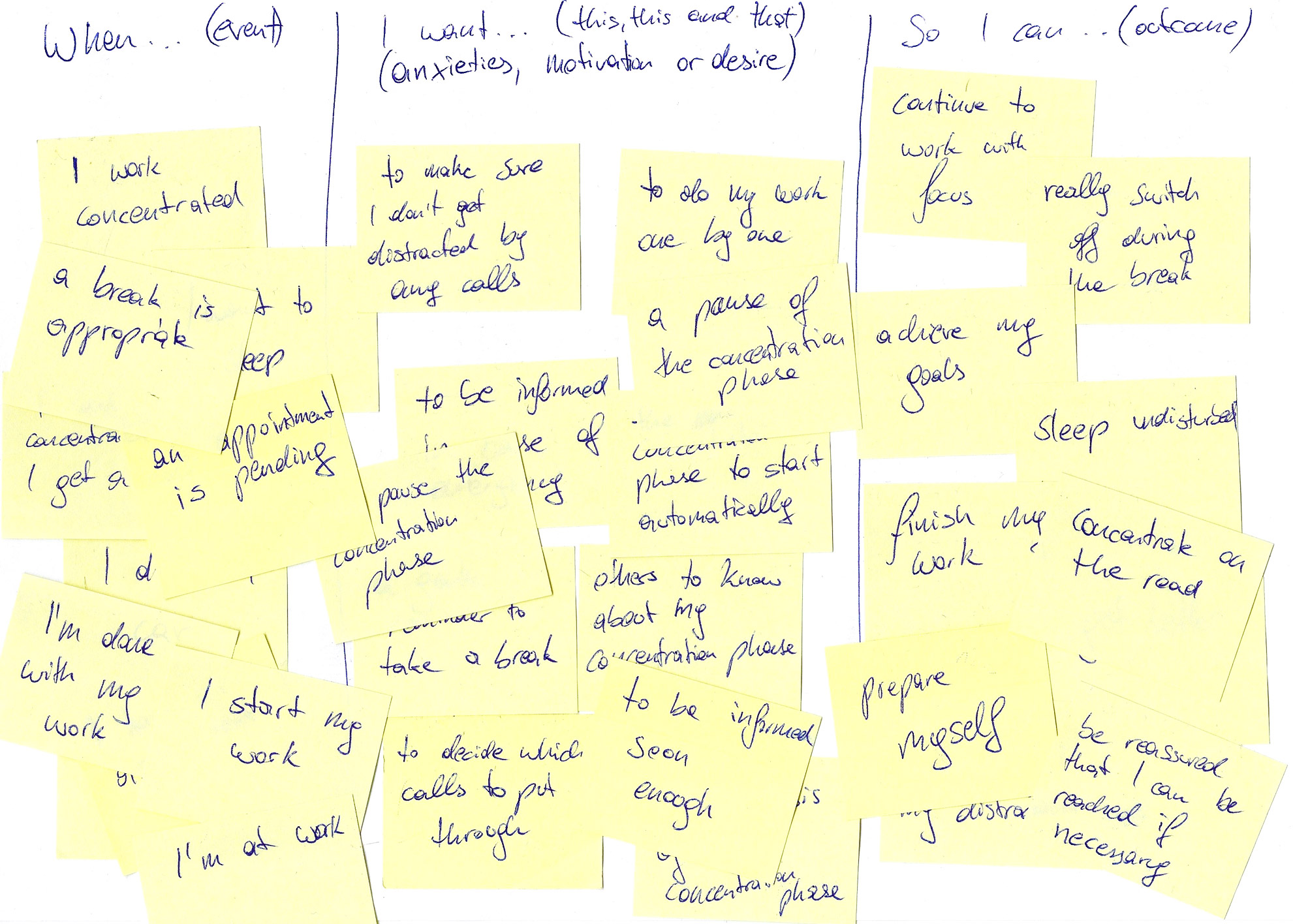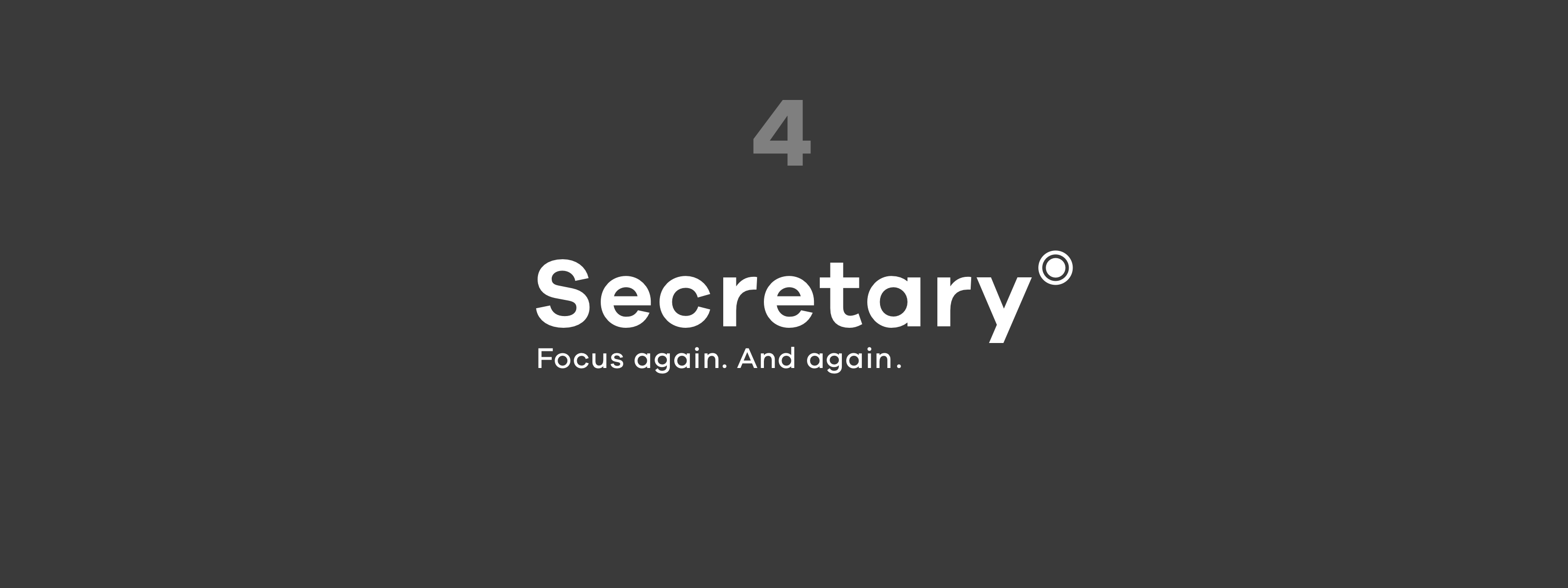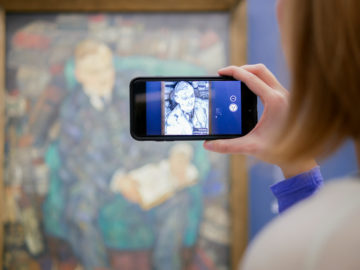Job Stories
Customers don’t buy products or services. They hire various solutions at various times to get an array of jobs done.
The problem with user stories is that it’s too many assumptions and doesn’t acknowledge causality. When a task is put in the format of a user story (As a [type of user], I want [some action], so that [outcome]) there’s no room to ask „why“ — you’re essentially locked into a particular sequence with no context.
https://jtbd.info/replacing-the-user-story-with-the-job-story-af7cdee10c27
Therefore I frame every design problem in a Job, focusing on the triggering event or situation, the motivation and goal, and the intended outcome: When SITUATION, I want to MOTIVATION , so I can EXPECTED OUTCOME.
Once again, I have used my interviews for this. I have written down events, situations, jobs, goals and needs, fears or motivations on individual notes. I then sorted them and assigned them to each other.

The results are the following job stories. To make the job stories more precise I gave some stories an additional context and summarized some of them.
When I am working concentrated I want to make sure I don’t get distracted by any notifications, I want others to know about my concentration phase and I want my workplace to adapt automatically so I can stay focused.
When I am driving I want to make sure I don’t get distracted by any notifications and I want others to know about my concentration phase so I can concentrate on the road.
When I work concentrated and my child is on a dangerous journey right now I want a notification in case of an emergency so I can be reassured that I can be reached if necessary, while other annoying notifications do not disturb.
When I play around with restricted apps for example Instagram for too long during working hours, I want to be informed that it’s time to continue to work so I can achieve my goals.
When I’m done with my work I want an analysis of my concentration so I can get an awareness of my distractions and get better in the end to achieve my goals more efficiently.
When I have worked concentrated for a long time and a break is now appropriate I want a gentle reminder to take a break and an automatic pause of the concentration phase so that I can work with full concentration afterwards.
When I want to sleep I want to make sure I don’t get distracted by any calls and I want a notification in case of an emergency so I can sleep undisturbed and knowing that I can be reached if necessary.
When an appointment is pending and it is away from my office I want to be informed soon enough so I can prepare myself and get on my way.
Key Properties
Five key properties have emerged for me in the course of my research, which my Attention Management System must basically perform.
It should …
- sense attention (concentration phase, driving, sleeping, during an appointment, …)
- communicate the attention
- augment the focus
- propose next steps in order to maintain attention (suggest apps, take breaks, continue working, …)
- analyse the attention and provide advice

